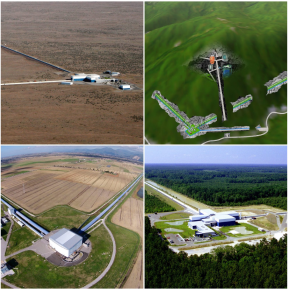Gravitational-wave detectors begin new round of data acquisition
The LIGO-Virgo-KAGRA (LVK) collaboration is starting a new observing campaign with modernised instruments, new, even more precise signal models and more advanced data analysis methods. This campaign, dubbed O4, began on 24 May and will run for 20 months. With improved sensitivity and range, researchers expect to observe a much larger number of cosmic events, at a rate of one every 2 to 3 days, and thus gain access to new physical measurements of the Universe.
The data will be collected in several stages. From 24 May, the two LIGO interferometers will operate in conjunction with the KAGRA interferometer, which will start with a limited preliminary sensitivity before leaving the campaign after a month and resuming its operations to increase sensitivity. The LIGO detectors will then operate on their own for a few months before being joined by the Virgo interferometer, which has decided to delay its entry into the observing campaign in order to increase its sensitivity and therefore its scientific impact (See the press release of 12 May 2023). (see the press release of May 12 2023)
Download the press release published by the LIGO-Virgo-KAGRA (LVK) collaboration for the launch of this new O4 campaign: "Gravitational wave detectors begin a new observation campaign to explore the secrets of the universe".
À propos de Virgo
Virgo is a laser interferometer with two three-kilometre arms, designed to detect gravitational waves, imperceptible oscillations of space-time generated by violent cosmic events, such as the merging of black holes and neutron stars. To detect gravitational waves, Virgo measures the relative distance between two mirrors suspended at the ends of its arms, with an accuracy of less than one thousandth of the diameter of a proton (one millionth of a billionth of a metre). The interferometer works by detecting the interference of two laser beams propagating along two perpendicular arms three kilometres apart in ultra-high vacuum tubes. Virgo is currently one of the three largest and most sensitive gravitational wave detectors in the world, along with the two American LIGO interferometers, with which it has been operating jointly since 2017.
The experiment's international scientific collaboration involves 842 researchers from 115 institutions in 15 countries. Virgo is installed at the European Gravitational Observatory (EGO), the research infrastructure funded by the Italian Istituto Nazionale di Fisica Nucleare (INFN), the French Centre national de la recherche scientifique (CNRS) and, from 2020, also by the National Institute of Subatomic Physics (Nikhef) in the Netherlands.
